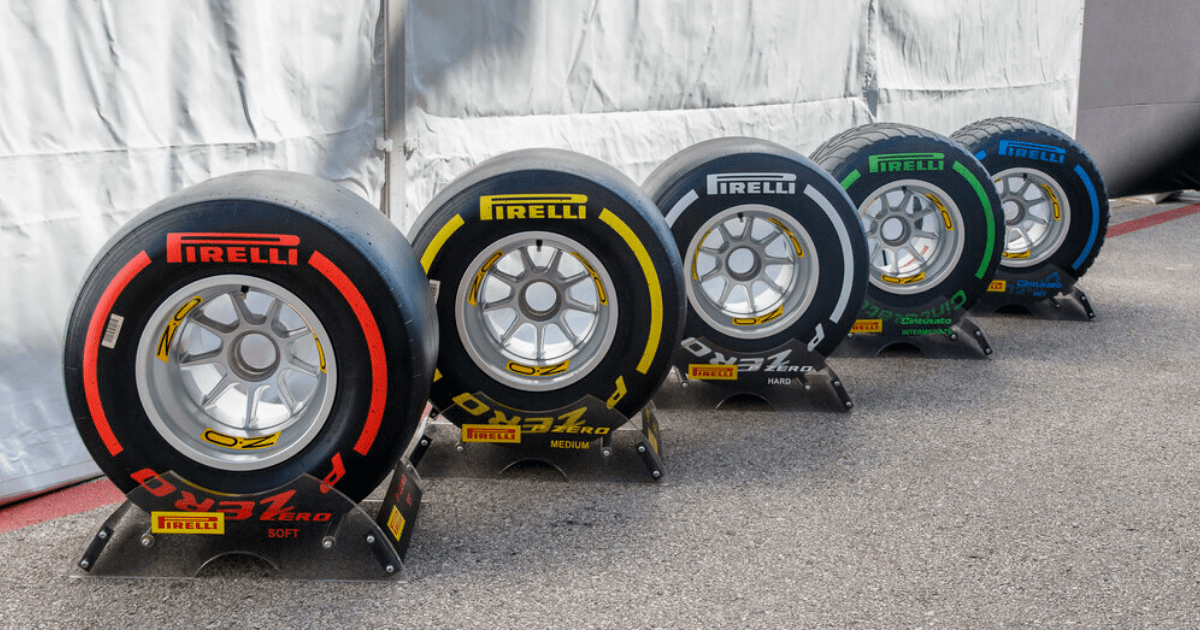IF you ever watch a Formula One race, you will undoubtedly hear the commentator talk about tyres.
We don’t really consider just how important they are on our road cars.
There are five types of tyres available to F1 teams and they use three of the five on race weekends
But in racing the performance of the tyre is crucial, after all, it is the only thing connecting the driver and his F1 car from the ground.
Unlike other championships, there is just a single tyre supplier in F1 – Pirelli – who are paid by the teams to supply tyres for the season.
Here looks into the F1’s world of rubber and answers some of the key questions.
What are the five types of different Formula One tyres?
Pirelli produce five different types of tyre.
Three variations of the slick tyre, one set of intermediate tyres and a set of wet.
The slicks offer the quickest lap times where as the intermediate tyres are used on a drying track or when there is light rain in parts of the track.
Wets are obviously used in the rain but the profile is designed not only to maintain grip, but also to dispel the standing water from the track.
What do the colours on this side of the tyre mean?
Fortunately, we are able to identify what tyres a driver is using by the coloured bands around the side of the tyre wall.
Red indicates the softest tyre.
Yellow is the medium and white for the hard tyres.
Green is the banding on the intermediates and blue for wets.
The tyres are colour coded so fans and commentators can easily spot which tyre choice the teams have gone with during a race
Why do they use soft, medium or hard?
Here is where some of the confusion starts.
While Pirelli bring three sets of slick tyres (soft, medium and hard) to each race, the actual compound differs from track to track.
There are five different compounds, called C1, C2, C3, C4 and C5.
C1 is the harder compound and will last longer, they are used in high-speed tracks such as Silverstone and Suzuka that take a lot of energy out of the tyre life.
The C5 compounds are the softest variety and offer the stickiest rubber, used for street circuits like Monaco where high grip is vital.
How many tyres can one driver use over the weekend?
During a race weekend, each driver is allocated 13 sets of dry tyres to last the whole race weekend, however, most are handed back after the practice sessions.
Teams have to run the tyres at the pressures ordered by Pirelli to preserve the tyre’s safety.
If a driver makes it into the top 10 on the grid in qualifying, the driver must start the race on that exact set he set his best lap time in Q2.
Drivers outside the top 10 on the grid have a free choice on which tyres they start the race.
F1 rules for a dry F1 race require each driver to use at least two different compounds, so either a hard and soft for instance.
This not only forces them to make at least one pit stop, but also creates a fascinating strategy as teams try to work out the quickest route to the finishing line.
So a driver may start the race on the quicker, but less durable, soft tyres but then pits for the slower but durable hard tyre.
A rival could opt for three pit stops, starting on the soft then swapping to the medium tyre before taking another new soft tyre for quicker speeds at the end of the race when the car is also light on fuel.
What happens with the old tyres?
Every tyre goes back to Pirelli and is checked at their factories in Italy or Turkey for any defects.
The tyres are then ground up and used in building construction.
How much do F1 tyres cost?
The teams effectively rent the tyres off Pirelli, which costs around £4.4million or $5m a year.
Each team is allowed to use 13 sets of tyres per grand prix weekend.
The price of an individual tyre is around £2,300 or $2,700 each, and that means a team would spend about £30,700 per grand prix weekend, or $35,000.

